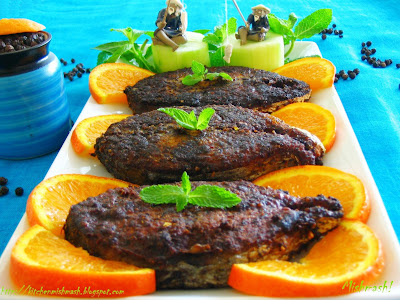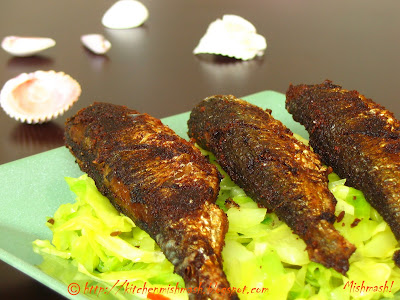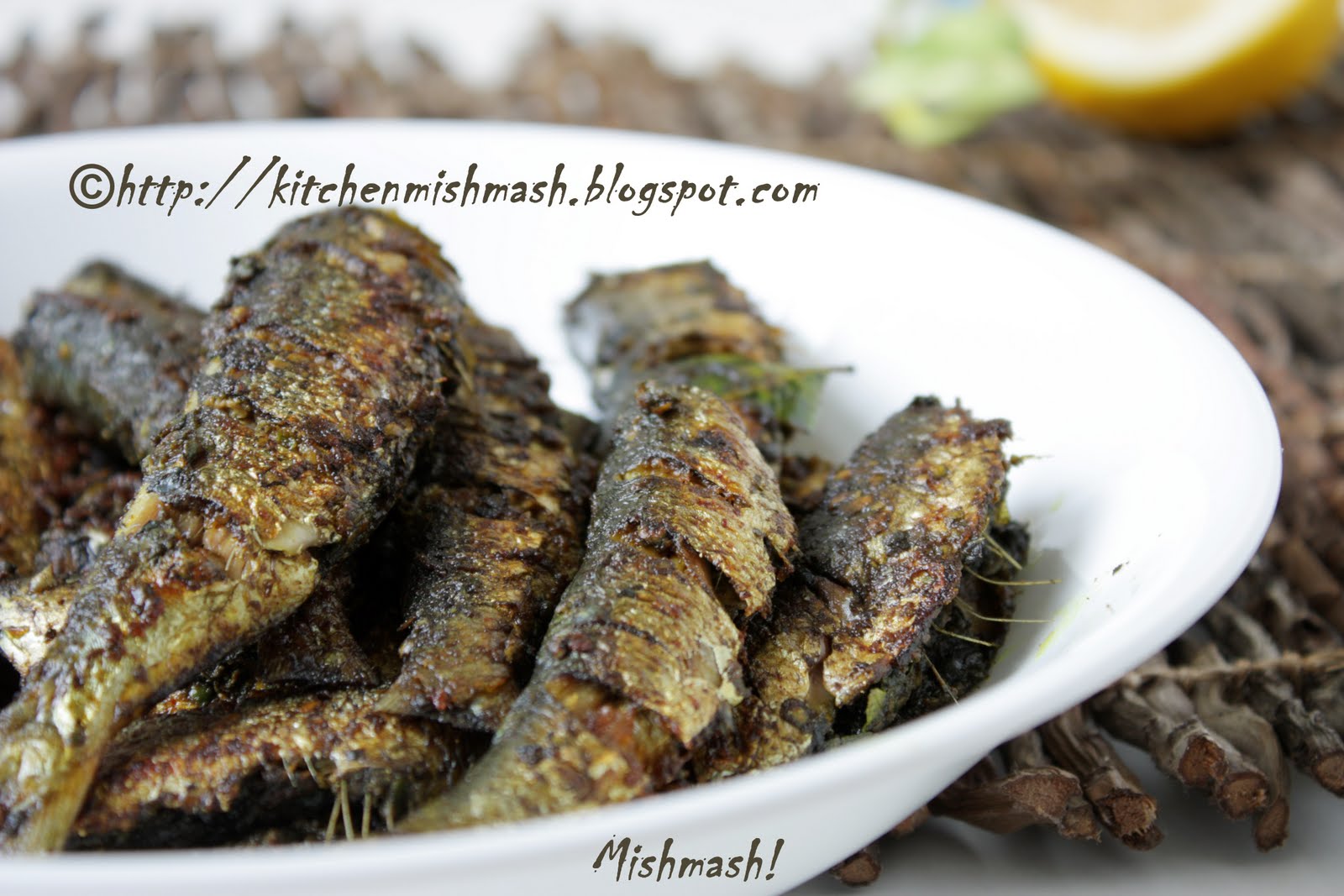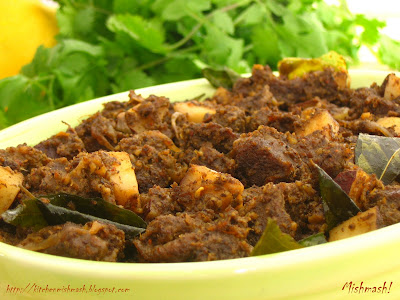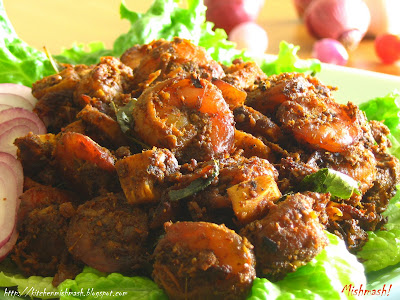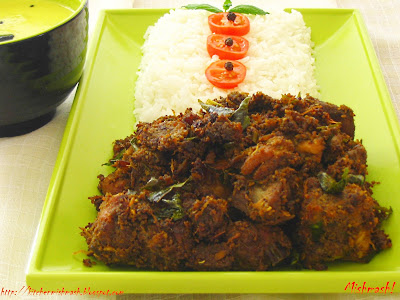Warning: Long Post.
....that charred smell of fresh banana leaves along with the tempting fragrance of rice flour dough and grated coconut roasting on a mann-chatti (clay pot).......
I wrote that line almost 20 minutes back and I am stuck there unable to capture the true essence of the I-R-R-E-S-I-S-T-I-B-L-E smell that wrapped me up when we cooked Ottada last week. I realise I do not possess the vocabulary to really translate the smell sensation I experienced through my words……….., it is something to be experienced…… something to be tasted.....and it is really difficult to capture the feeling in words and that's what I conclude especially when I go back and read a line from Nikhil Narayanan's mail ".......ottada in vazhaila, the cooking done on a dosa thatt.Trust mee,the taste of left over pieces of karinja vazha ila on them is :-) " That smiley says it all!
It all started almost a month ago on a late afternoon when I received a surprise mail from Nikhil saying, "Shn, I was searching for ottada and landed on this pdf. May be you can try this if u haven't written about Ottada already. http://krpcds.org/publication/downloads/62.pdf " As I finished reading his mail, my immediate reaction was "Isn't it same as Ela Ada with coconut and sugar filling and roasted on mannchatti , instead of steaming and why should I take the effort to blog about it just to showcase a different technique? ". But as I started browsing through the article , especially the "Cultural Heritage and Lifestyle" section that gave a very brief account of the local food habits of the people of Kalliasseri panchayat, Kannur district, Kerala, I realised one more time in my food blogging experience, the significance and existence of regional variations in food and food habits, even in the category of simple food.
In this work, the author, Mr.T.P Sreedhanan described Ottada as follows: “Rice is ground into paste. Coconut and jaggery are added. It is then pastened on the inner side of plantain leaf, folded, and placed on a cloth tied over the mouth of an earthen pot containing boiling water. The paste is boiled in steam into a delicacy.”
Well, that was completely different from my idea of Ottada I had gathered from my mother.I could feel my curiosity barometer rising minute by minute especially when a web search on "Ottada" threw results that were intriguing, conflicting and confusing at the same time. At that point in time I wished I was in Kerala , researching about Ottada, considering the number of variations the web search revealed!!! Yes, the curiosity barometer was really at its high point!
That's when I noticed a comment from Renu Ramanath on one of the blogs where she had written, "....making ada-s in manchatti sounds interesting. may be this is what we refer to as 'ottada,' as ada is otherwise prepared by steaming." Renu's blogs have always been of interest to me because of the trivia she provides on certain traditional food and customs that are becoming extinct and to an extent, her articles satiated my appetite to learn about the socio-cultural background of our traditional cuisine. Noticing that her idea of Ottada matched with the information I had gathered from my family, I contacted her that evening itself and she promptly replied to my mail saying , “well, i haven't exactly eaten 'ottada,' only heard about it. to my knowledge, it has the same batter as that of steamed ela ada, i mean, jaggery and coconut filling, in rice batter spread on the banana leaf. but, ottada is made by roasting in a chatti, or even by placing over embers, like pappadam. i'm sure it will haev a distinct flavour. even my google search revealed different recipes. i think the one i saw in the site called 'pachakam,' comes closer to my idea of 'ottada.'.
I wrote back to Nikhil with the information I had collected and the little piece of info my mother shared that Ottada was originally done in an “Ottu-paathram” and that’s how perhaps it got its name. Nikhil reverted to my mail confirming the same stories and later sent me a very value adding piece of info that “the ott in ottada refers to od(tile) and not brass“ Learning that Ottu –patthram that I had earlier perceived (wrongly ) to be a bell-metal griddle was being referred , in this context, to a mann-chatti made of clay, the same material used for making an old fashioned roof tile/’Odu used in Kerala- I was getting more clarity as to the general use of mann-chatti/clay pot for roasting this rice flour parcels filled with sweet fillings.
Meanwhile, I had also contacted my aunt and brother –in-law who hails from Kannur and my aunt shared the recipe followed in her family, with my mother. I must note that though from Kannur itself, my aunt’s recipe for Ottada and the one listed in Mr. T. P . Sreedharan’s article are entirely different except for the fact that in both these recipes rice is ground to a paste. I have given my aunt’s recipe with pictures towards the end of this post. I have also added a technique my maternal grandmother uses to get a slightly different/soft texture for Ottada. You can also find some links at the end of this post to have an idea about the regional variations.
**
Before I move on to the recipe, let me write this point very clearly that neither me nor the people I have contacted are an authority on the subject to establish this as the original version or a particular regional style. None of us have done any research on this topic to have a final word on this dish or the variations available out there. This post is only an attempt to compile the information -coming under the category of hearsay- I have collected from here and there and hence please do forgive me if I am unknowingly making the blasphemy of putting out any misleading information here. Please DO correct me if I have generalised any data or given out any wrong information here.
Ottada : Recipe followed in my ancestral families
The texture of Ottada, rice flour parcels filled with sweetened grated coconut , flavored with a hint of cardamom is totally different from the steamed Ela Ada. Ottada is not as soft as the steamed ones; roasting gives it a slightly hard texture with distinct flavours of banana leaf and mann-chatti/clay pot and the charred spots add more to the taste. If you don’t havemann-chatti/clay pot, use a cast iron or non stick griddle and can attain the same effect while cooking but I must add that the flavor and aroma that a mann-chatti gives is beyond description.

Ingredeints:
- 1 ½ cups rice flour, roasted
- 1- 1 ¾ cup hot boiling water ( varies depending on the rice flour; add just enough to make a soft dough)
- Salt to taste
- 1 ¼ cup freshly grated coconut
- ¼ cup sugar or to taste
- 6 cardamom, crushed ( adjust depending on the strength of cardamom)
- Banana leaves for wrapping

Directions:
- Using your hands, blend sugar and crushed cardamom with freshly grated coconut.
- Make the rice flour dough by first mixing rice flour and salt; to this add the boiling hot water, just enough to make a soft and smooth dough; use a spoon to blend everything well and when it is warm enough to touch, knead gently and make the dough and divide them into 10 balls (Note: the dough should be looser than the chappathi/roti dough but as soft as the Idiayappam/string-hoppers dough)
- Take a piece of banana leaf in rectangular shape, as shown in the pictorial HERE; place one rice dough ball and flatten it gently; then with fingertips, stretch the dough onto the leaf, flattening it very thin . Dipping the finger in water, once in a while, will make this process easier, especially if the dough is a bit sticky or dry. Once the dough is stretched out, keep some sweet filling on one half and fold the other half and press the edges gently, making sure that it is sealed well, else the filling might come out.
- Heat a shallow mann-chatti/clay pot and when it is really hot, place 1-2 folded banana leaf parcels and let it cook for about 5-10 mts; now flip the parcels, reduce the heat and let the other side cook; you will notice the banana leaves drying up and browning and at this point you will be able to lift the banana leaf gently and see the Ada changing its colour as it gets cooked. Flip both the sides one more time and cook for some more minutes until Ada is cooked/roasted well with a golden shade on top , with charred spots here and there as in the pictures given above.
- Ottada can be served as either a snack or breakfast along with tea/coffee
Ottada: My maternal grandma’s method.

My maternal grandma had a technique to bring in the softness of steamed Ada in Ottada. She sprinkled some water on the banana leaf parcels, after placing them on mann-chatti/clay pot and then closed it with a lid. This helps to lock in some moisture and maintain a soft texture while roasting . There is no need to sprinkle water when you flip the third and fourth time. The pictures below will give you an idea about the same.

Ottada : My aunt’s family recipe from Kannur
As I wrote in the introduction, though from Kannur itself, my aunt’s recipe for Ottada and the one listed in Mr. T. P . Sreedharan’s article are entirely different except for the fact that in both these recipes rice is ground to a paste. My aunt’s recipe for Ottada is more like rustic flat bread, roasted on a non stick or cast iron griddle. The taste of Kuthari and grated coconut gives that simple flavors of the old world.

Ingredients:
- ¾ cup Kerala rosematta rice/Kuthari ,soaked overnight
- 1 cup freshly grated coconut
- Salt to taste

Directions:
- In a mixer, grind all the ingredients together into a thick paste, adding just enough water to operate the mixer to make a thick paste. The batter need not be as smooth and fine as that of dosa/idli batter; it should be thick,so you can spread with your hand.
- Heat a non-stick or cast iron griddle; pour one or two ladles of batter and using your hand, spread them gently on the griddle in a round shape. Cover with a lid and cook both the sides , by flipping three or four times , until Ada is cooked well and a golden hue appears on top. Those who prefer a bit more browned and charred spots on Ada, can continue to cook for some more time until you get the desired results.
Here’s some more variations available on the web for Ottada:
Before I call it a wrap, let me thank Renu for her prompt responses and helping me clear out some of my doubts ………..many thanks to my family especially my aunt and my mother who helped me with the recipes and instructions ……and a special thanks to Nikhil Narayanan for firing up my curiosity to explore this simple and tasty delicacy of the old world, to understand the existence of the numerous variations available for such a simple one which I would have overlooked , had he not mailed me in the first place………Thank YOU :)
UPDATE : Continuation of this post HERE with more on regional variations and food habits.
Luv
Shn


